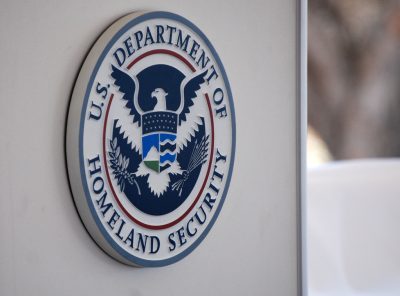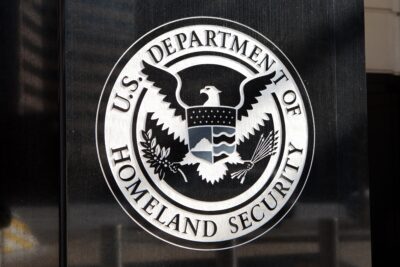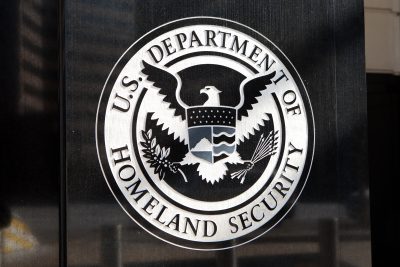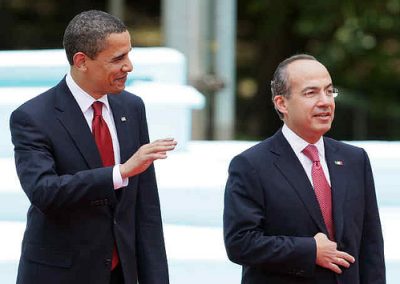Immigration at the Border

Immigrants with Mental Disabilities Are Deprived Their Day in Court
The U.S. legal system is premised on the idea that every party in a case is afforded his or her day in court and a meaningful opportunity to be heard. Yet, for individuals with mental disabilities facing deportation from the United States—including those whose removal will mean being permanently barred from ever returning—that day may never arrive. Read More

You Can Still Be Heard: DHS Extends National Dialogue Deadline
The Department of Homeland Security has extended the National Dialogue on the Quadrennial Homeland Security Review deadline until tomorrow, Wednesday, September 9th. Log onto DHS’ website now and post your comments and feedback. Your voice should be heard. The 2009 Quadrennial Homeland Security Review process is a web-based… Read More

Speak up! The Department of Homeland Security is Listening
The 2009 Quadrennial Homeland Security Review process, a web-based interactive dialogue designed by the Department of Homeland Security (DHS) to allow your opinions and ideas to inform and strengthen the Department’s relationship with its vast array of partners and stakeholders, has been up and running for a few weeks now. The online portal, however, will stop taking comments this Sunday, September 6. Read More

New Report Measures Widening Gap Between Republicans and Latino Voters
A New York Times article from 1882 stated, “It is a trite saying that in a free country public opinion rules. […] It often happens that a question of policy becomes of pressing importance before public opinion develops in regard to it.” More than one-hundred years later, this idea remains true—especially in regard to Latino voters and the Republican Party. Read More

Local Company Gives ‘Sin City’ a Bad Name
Las Vegas prides itself on its strong union-staffed hotels and casinos. However, according to a class-action lawsuit recently filed, Bravo Pro Inc. was allegedly paying workers $3.50 to $4.00 per hour for 13-hour shifts with no overtime pay. Their employees were providing janitorial and maintenance services to Bravo’s clients around the city. According to the Las Vegas Sun: The workers’ attorney, Matthew Callister, says the company held its mostly-Mexican workforce in a form of “indentured servitude,” squeezing more labor out of frustrated workers by promising to make them whole one day. Many tired of waiting and quit. Others, undocumented and desperate for work, remain silent. Read More

Faith and Leadership Required: A Closer Look at Last Week’s White House Meeting
Last week’s White House meeting on immigration marked another chapter in the years-long effort to enact comprehensive immigration reform. Janet Napolitano’s invitation to more than one hundred representatives from business, labor, faith, law enforcement, and immigration groups was a genuine attempt to listen to concerns and solicit ideas. The format—large group meeting addressed by the Secretary, small group discussion led by various DHS and White House officials, summary and surprise remarks from the President—gave people a chance to say just a little, but the cumulative effect was more important than we may realize. Read More

New Report from Cato Institute Highlights Economic Benefits of Legalizing Unauthorized Immigrants
Leading economists agree that the cornerstone of any immigration reform bill should be some form of legalization for the roughly 12 million undocumented immigrants currently living in the United States. Critics of legalization, namely enforcement-only cheerleaders, fail to realize that legalization would improve wages and working conditions for all workers—including the native-born—and would yield a net benefit to the recovering U.S. economy. One study estimates that an immigration reform bill which includes legalization would yield a net benefit of $180 billion over a ten-year period, while enforcement efforts alone would actually cost $80 billion over the same period. Read More

States and Localities Critical to Immigration Policies
Governors and mayors, state legislatures and city councils are playing an increasingly critical role in U.S. immigration policy. As a result of Congress’s inaction, states and localities are feeling pressure to take action on immigration, and many of the policies that directly impact immigrants’ lives—law enforcement, public benefits, driver’s licenses—are being driven by new state and local laws. Some state and local immigration policies have been positive and have helped to integrate immigrants into American communities. Others, however, have had a harmful impact on immigrants as well as on public health and safety. The National Conference of State Legislatures (NCSL), a bipartisan organization that serves the legislators and staffs of the nation's 50 states, recently published two documents that highlight the role that states play in immigration policy. One is a report on recent state activity, and the other is NCSL’s official immigration policy statement. Read More

Quadrennial Homeland Security Review: Is DHS Asking the Right Questions?
If you go to the National Dialogue on the Quadrennial Homeland Security Review (QHSR) website and click through to the Smart and Tough Enforcement of Immigration Laws section, you will find a bit of surprise. Despite a title that panders to the enforcement first crowd, implying that immigration policy is all about being “tough,” there is actually a remarkably thoughtful effort to capture a broader set of immigration policy goals. Take a look at the mission statement: A secure, unified, fair, adaptive, and responsive immigration system that protects the public, enriches our society, and improves our economy. Read More

President Obama Says “Yes We STILL Can” with Comprehensive Immigration Reform
Last Friday, President Obama spoke to a group of Hispanic reporters at the White House and again reaffirmed his commitment to passing a comprehensive immigration reform bill sometime in early 2010, with a draft to be ready as soon as the end of this year. “We have convened a meeting of all the relevant stakeholders,” the President said, “and Secretary Napolitano is working with the group to start creating the framework for a comprehensive immigration reform.” One of the things standing in the way of his immigration efforts, the President Obama joked, are members of the Republican Party who still believe he is an illegal immigrant. Sad, but true. Read More
Make a contribution
Make a direct impact on the lives of immigrants.
